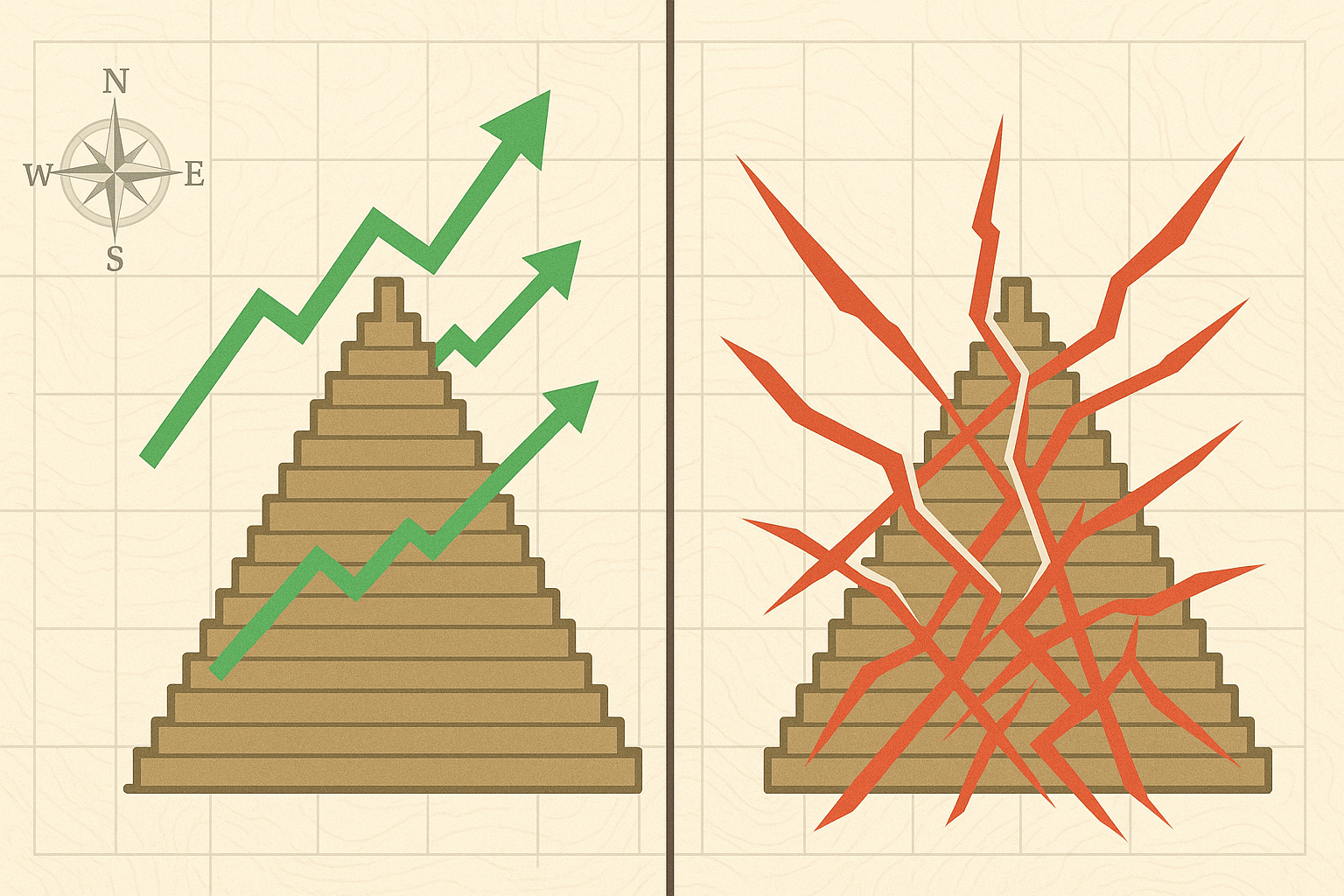Simply put, a youth bulge occurs when young adults (typically aged 15-29) make up a disproportionately large share of the population, often exceeding 40%. This demographic structure is a direct result of a specific stage in a country’s development: infant mortality rates have fallen thanks to better healthcare and sanitation, but fertility rates remain high. The result is a population pyramid with an extremely wide base, a generation larger than any that came before it.
Mapping the Global Hotspots
Today, the world’s youth bulges are concentrated in specific geographical regions, creating a map of both immense potential and significant risk.
Sub-Saharan Africa: The World’s Youngest Continent
This is the global epicenter of the youth bulge. With over 60% of its population under the age of 25, Africa is by far the youngest continent. Countries like Niger (median age 15), Uganda (median age 16), and the Democratic Republic of Congo are prime examples. Megacities like Lagos, Kinshasa, and Dar es Salaam are expanding at a staggering pace, absorbing millions of young people migrating from rural areas in search of opportunity. This massive, youthful population puts immense pressure on infrastructure, education systems, and job markets that are already struggling to keep up.
The Middle East & North Africa (MENA)
The MENA region provides a stark lesson in the geopolitical implications of a youth bulge. A decade ago, a generation of educated but unemployed young people, connected by social media and fueled by a sense of disenfranchisement, formed the backbone of the Arab Spring. While the demographic peak has passed in some MENA nations, countries like Yemen, Iraq, and Egypt still grapple with the challenge of providing meaningful futures for their vast youth populations, a factor that continues to fuel regional instability.
South and Central Asia
Countries like Afghanistan (median age 18) and Pakistan are classic youth bulge nations. Decades of conflict, combined with high fertility rates, have created a volatile mix. For Pakistan, the challenge is to educate and employ the 64% of its population under 30 to power its economy. For Afghanistan, that same demographic reality presents a deep-seated challenge to establishing long-term stability.
A Double-Edged Sword: Dividend or Disaster?
A youth bulge is not inherently good or bad; it is a period of potential. The direction it takes—towards an economic boom or social unrest—depends almost entirely on the geographic, economic, and political context.
The Ticking Bomb: Catalyst for Unrest
When opportunities are scarce, a youth bulge can become a powerful destabilizing force. The key ingredients for this dangerous cocktail are:
- Massive Unemployment: When millions of young people enter the workforce each year with few formal jobs available, it creates a vast pool of idle, frustrated individuals. This “waithood”—a prolonged adolescence where young people cannot secure a job, get married, or start a family—breeds desperation.
- Rapid, Unplanned Urbanization: The magnetic pull of cities often leads to the explosive growth of slums and informal settlements. These areas frequently lack basic services like clean water, sanitation, and security, creating friction and social tension.
- Political Instability: A large, unemployed, and politically marginalized youth population is more susceptible to mobilization by protest movements, criminal gangs, or extremist ideologies that promise purpose and belonging. The Sahel region, stretching across Africa south of the Sahara, is a worrying example where resource scarcity (driven by climate change) and poor governance collide with a massive youth bulge, creating fertile ground for conflict.
The Demographic Dividend: Engine for Growth
Conversely, if managed correctly, a youth bulge can trigger a “demographic dividend”—a period of accelerated economic growth. This happens when a large working-age population has fewer dependents (children and elderly) to support. The key factors are:
- A Large, Dynamic Workforce: A healthy, educated, and employed youth population can be incredibly productive, driving innovation and industrial growth. The East Asian “Tiger” economies like South Korea and Taiwan famously harnessed their youth bulges in the late 20th century to transform into global economic powerhouses.
- A Burgeoning Consumer Market: A young population with disposable income creates enormous domestic demand for goods and services, from mobile phones and internet access to housing and entertainment, attracting both local and foreign investment.
- Increased Savings and Investment: With a lower dependency ratio, both families and governments can save and invest more money into the economy, creating a virtuous cycle of growth.
The Tipping Point: Geography and Governance
What determines whether a country reaps the dividend or suffers the disaster? The answers lie at the intersection of policy and place.
Governance is paramount. Governments that invest proactively in education, healthcare, and family planning are laying the groundwork for a skilled workforce. Economic policies that encourage job creation, support entrepreneurship, and diversify away from reliance on a single natural resource are crucial. Political inclusion that gives young people a voice in their future is essential to prevent alienation.
Geography, both physical and human, is decisive. A landlocked country in a conflict-ridden region faces far greater hurdles than a coastal nation with stable neighbors. A nation blessed with fertile land can better feed its growing population, while one facing desertification and water scarcity will see its demographic pressures magnified. The very structure of a nation’s cities—whether they are planned, inclusive centers of opportunity or chaotic, segregated sprawls—will shape the destiny of its young inhabitants.
Conclusion: The Clock is Ticking
The youth bulge is one of the most powerful geopolitical forces shaping our world today. It is redrawing the demographic map and concentrating the future of global labor, consumption, and conflict in the cities and plains of Africa and Asia. This is not a deterministic fate. It is a window of opportunity. For nations standing at this crossroads, the clock is ticking. The policies enacted, the infrastructure built, and the opportunities created in the next decade will determine whether their greatest resource—their people—becomes their greatest strength or their most profound challenge.
